Navigating Global Markets: A Long-Term Investor’s Guide to Top ETFs
Are you wondering how to build a resilient investment portfolio in a rapidly changing global financial landscape? With recent shifts, particularly the unexpected underperformance of the U.S. market, many long-term investors are seeking robust strategies. This article will explore how Exchange-Traded Funds (ETFs) offer a powerful and accessible vehicle for diversification and growth. We’ll guide you through selecting core holdings, identifying innovative sectors, and capitalizing on burgeoning international markets to uncover opportunities that extend far beyond current market fluctuations.
Here are some key advantages of incorporating ETFs into your long-term strategy:
- ETFs provide instant diversification across various assets, sectors, and geographies, reducing single-stock risk.
- They often come with lower expense ratios compared to actively managed mutual funds, preserving more of your returns.
- ETFs offer liquidity, allowing investors to buy and sell shares throughout the trading day at market prices.
Our journey will cover the shifting dynamics of global markets, help you build a stable core portfolio, explore exciting thematic investments, and show you how to expand your horizons internationally. Finally, we’ll provide practical guidance on smart ETF selection and risk management to help you maximize your long-term investment success. Let’s dive into how you can position your portfolio for the next decade of innovation and global expansion.
The Shifting Sands of Global Markets: U.S. Volatility vs. International Resilience
Early 2025 brought an unexpected turn in the financial world, with the U.S. stock market experiencing a significant downturn. The widely followed S&P 500 index, a benchmark for large-cap U.S. stocks, dropped almost 8.5% year-to-date. What caused this sudden weakness? A confluence of factors, including rising trade tensions, persistent inflation worries, and policy uncertainty, contributed to this period of volatility. This underperformance raised questions for investors accustomed to the U.S. market’s consistent outperformance in previous years. 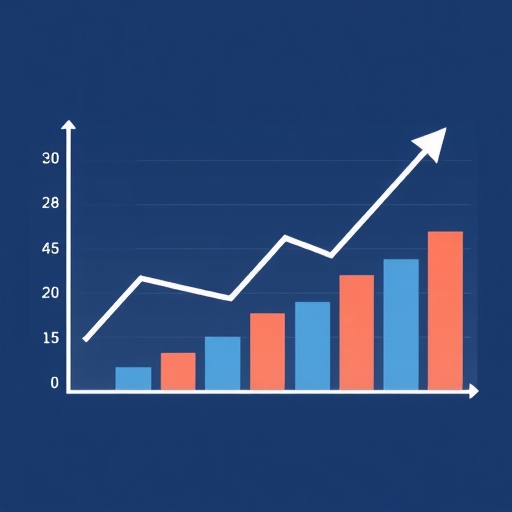
In stark contrast, other global markets demonstrated remarkable resilience and even impressive growth during the same period. European markets, for instance, showed a strong recovery. The iShares MSCI Eurozone ETF (EZU), which tracks the performance of companies in the Eurozone, was up over 16.4% year-to-date as of April 23, 2025. This growth was largely supported by economic stimulus packages, increased political stability, and a robust recovery across various sectors. Similarly, China’s economy showed resilience, with the iShares China Large-Cap ETF (FXI) gaining over 13% year-to-date, driven by supportive government policies and shifting regional trade dynamics. 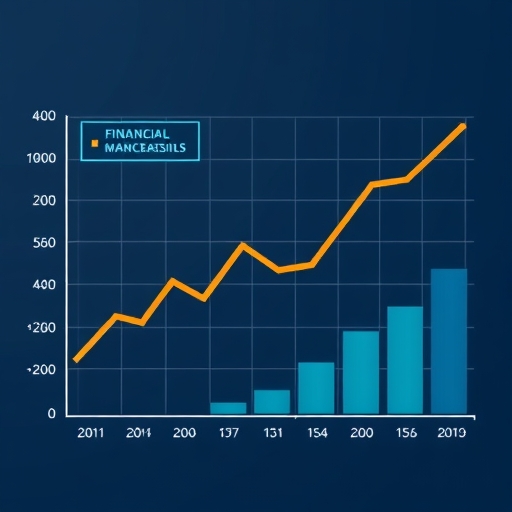
Beyond Europe and China, several emerging markets also significantly outperformed the U.S. market. Countries like Poland, Spain, Chile, Greece, Mexico, Italy, South Africa, Germany, Belgium, and Switzerland all saw strong individual country ETF returns. This highlights a crucial lesson for investors: diversification across different geographic regions is not just about reducing risk, but also about capturing diverse sources of growth. The market’s performance in early 2025 served as a powerful reminder that global opportunities are vast and often independent of domestic market trends. 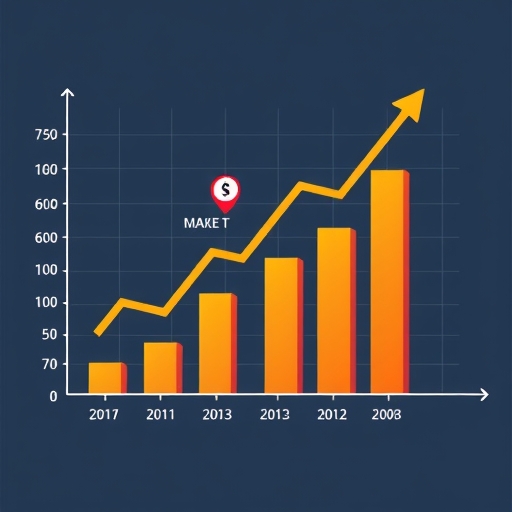
The table below summarizes the contrasting market performance observed in early 2025:
| Market/ETF | Region/Focus | Year-to-Date Performance (as of April 23, 2025) |
|---|---|---|
| S&P 500 Index | U.S. Large-Cap Stocks | -8.5% |
| iShares MSCI Eurozone ETF (EZU) | Eurozone Companies | +16.4% |
| iShares China Large-Cap ETF (FXI) | China Large-Cap Companies | +13.0% |
| Various Emerging Markets | Global Emerging Economies | Strong Individual Returns |
Building Your Core: Foundational ETFs for Stability and Broad Exposure
When constructing a long-term investment portfolio, the bedrock consists of core holdings designed for stability and broad market exposure. These foundational ETFs are ideal for compounding wealth over time, offering essential diversification and consistent returns. For many investors, a great starting point is a broad market index fund that covers a wide array of U.S. equities. These ETFs provide exposure to hundreds, if not thousands, of companies, significantly reducing the risk associated with individual stock picking. 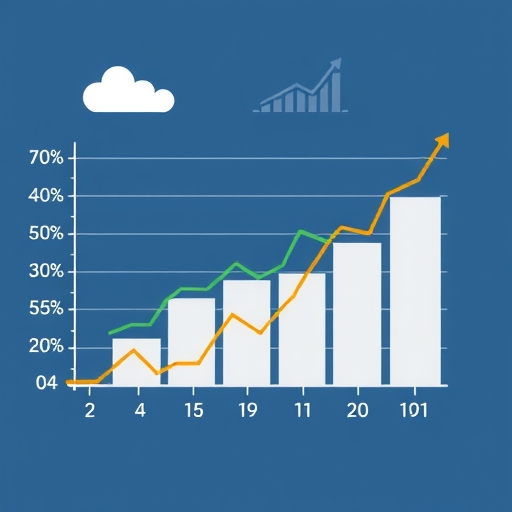
Here’s a brief overview of recommended core ETFs, offering different facets of broad market exposure:
| ETF Ticker | Focus | Key Benefit |
|---|---|---|
| VOO | S&P 500 Large-Cap U.S. Stocks | Diversification across 500 largest U.S. companies; low expense ratio. |
| VTI | Total U.S. Stock Market (Large, Mid, Small-Cap) | Comprehensive exposure to the entire U.S. equity market. |
| SCHD | U.S. Dividend Equity | Income-focused, high-quality companies with consistent dividend history. |
Let’s look at some excellent choices for your core portfolio:
- Vanguard S&P 500 ETF (VOO): This popular ETF tracks the performance of the S&P 500, an index comprising 500 of the largest U.S. companies. It offers instant diversification across various sectors like technology, healthcare, and finance. With an inception date of September 7, 2010, VOO has demonstrated strong annualized returns and boasts a very low expense ratio, making it a cost-effective way to invest in U.S. large-cap stocks.
- Vanguard Total Stock Market ETF (VTI): For even broader exposure, VTI invests in the entire U.S. stock market, including large, mid, and small-cap companies. This ETF truly represents the “total stock market” and offers exceptional diversification. VTI, established on May 24, 2001, has a similarly low expense ratio to VOO, making it a favorite for investors seeking comprehensive U.S. equity exposure.
- Schwab U.S. Dividend Equity ETF (SCHD): For income-focused investors, dividend equity ETFs can be a powerful component of a long-term investment strategy. SCHD focuses on high-quality U.S. companies with a consistent history of paying dividends, providing both income and potential capital appreciation. Historically, dividend-paying companies, especially dividend growers, have outperformed non-dividend payers over the long run. SCHD, which started on October 20, 2011, holds companies like PepsiCo, Verizon, and Chevron, and has a competitive expense ratio and attractive trailing-12-month yield.
These ETFs offer a robust foundation, allowing you to participate in the overall growth of the U.S. economy with reduced volatility compared to individual stocks. Remember, the goal of core holdings is stability and consistent long-term growth, providing a solid base for your entire portfolio.
Riding the Waves of Innovation: Thematic ETFs for Future Growth
Beyond your stable core, how can you position your portfolio to capitalize on the most impactful technological and societal trends of the next decade? The answer lies in carefully selected thematic ETFs. These funds focus on specific industries or themes expected to experience significant growth, driven by innovation and disruption. From Artificial Intelligence (AI) to clean energy, these investments offer exposure to the cutting edge of progress.
Thematic ETFs allow investors to target specific, high-growth areas, and a few notable examples include:
| Theme | Example ETF | Brief Description |
|---|---|---|
| Artificial Intelligence & Semiconductors | VanEck Semiconductor ETF (SMH) | Exposure to companies critical for AI infrastructure. |
| Blockchain Technology | Defiance Digital Revolution ETF (BKCH) | Invests in companies developing and utilizing blockchain. |
| Quantum Computing | Defiance Quantum Computing and Machine Learning ETF (QTUM) | Targets companies at the forefront of quantum and machine learning. |
Here are some key themes and the ETFs that allow you to invest in them:
- Artificial Intelligence (AI) and Semiconductors: AI is not just a buzzword; it’s a foundational technology transforming every industry. Semiconductors are the building blocks of AI, powering everything from smartphones to supercomputers.
- Invesco QQQ Trust (QQQ): While not strictly a thematic ETF, QQQ tracks the Nasdaq 100 index, which is heavily weighted towards large-cap technology and growth companies like Apple, Microsoft, and Nvidia. It has been a strong performer, with an inception date of March 10, 1999, capturing the rise of the digital age.
- VanEck Semiconductor ETF (SMH): This ETF provides targeted exposure to companies involved in semiconductor design, manufacturing, and distribution. With an inception date of December 20, 2011, SMH has been one of the most successful ETFs over the last decade, reflecting the critical role of semiconductors in digital transformation.
- Vanguard Growth ETF (VUG): This ETF focuses on large-cap U.S. growth stocks, which often include leading technology companies. It offers a broader approach to capturing growth trends than a sector-specific fund.
- Blockchain Technology: Beyond cryptocurrencies, blockchain is a decentralized ledger technology with applications across finance, supply chains, and cybersecurity.
- Defiance Digital Revolution ETF (BKCH): This ETF invests in companies involved in the development and utilization of blockchain technology. While highly volatile, it offers direct exposure to this transformative area. BKCH has an inception date of July 12, 2021, and its performance can fluctuate significantly with market sentiment towards digital assets.
- Quantum Computing: Still in its early stages, quantum computing promises to revolutionize problem-solving capabilities across science, medicine, and finance.
- Defiance Quantum Computing and Machine Learning ETF (QTUM): This ETF invests in companies at the forefront of quantum computing and machine learning. It provides exposure to a long-term, high-potential theme, albeit with higher inherent risk due to its nascent nature. QTUM started on September 4, 2018.
- Clean Energy (with a focus on Nuclear): As the world transitions to sustainable energy, nuclear power is gaining renewed interest as a reliable, carbon-free source.
- Defiance Daily US Nuclear Energy and Uranium ETF (NUKZ): This ETF offers exposure to companies involved in nuclear energy production and innovation. It’s a targeted play on a specific segment of the broader clean energy theme. NUKZ is a newer fund, launched on January 23, 2024.
- Biotechnology and Healthcare Innovation: Advances in areas like gene editing and personalized medicine are driving significant innovation in healthcare.
- iShares Biotechnology ETF (IBB): This ETF invests in companies primarily engaged in the biotechnology sector. It offers exposure to the potential for groundbreaking medical advancements. IBB has a long track record, with an inception date of February 5, 2001.
Investing in these thematic ETFs allows you to align your portfolio with powerful, long-term trends. However, remember that these specialized funds can carry higher volatility and risk compared to broad market ETFs, so they should be balanced appropriately within your overall investment strategy.
Expanding Horizons: Harnessing Growth in International and Emerging Markets
True diversification extends beyond domestic borders. As we saw with the U.S. market’s early 2025 downturn, relying solely on one region can expose your portfolio to unnecessary risk. Looking to international and emerging markets can unlock new sources of growth and provide crucial stability. These markets often operate on different economic cycles than the U.S., offering a valuable counterbalance to your domestic holdings.
Let’s explore how to effectively harness global growth opportunities:
European and Developed International Markets
Europe’s strong performance in early 2025 highlighted its potential. Many developed international markets offer mature economies with stable companies and attractive valuations. Investing in these regions can provide exposure to global brands and economic recovery outside the U.S.
- iShares Core MSCI Total International Stock ETF (IXUS): This ETF provides broad exposure to stocks in developed and emerging international markets, excluding the U.S. It’s a great way to gain instant international diversification across countries like Japan, the U.K., Canada, and France. IXUS also has a low expense ratio, making global investing accessible and cost-effective.
- iShares MSCI Eurozone ETF (EZU): As mentioned earlier, EZU focuses specifically on countries within the Eurozone, allowing you to target this economically stable and recovering region.
Dynamic Asian Markets
Asia, particularly China and India, represents significant economic powerhouses with massive populations and rapidly expanding middle classes. Their growth trajectories are often steeper than developed nations, offering high-reward opportunities.
- iShares China Large-Cap ETF (FXI): This ETF tracks large-cap Chinese companies listed in Hong Kong. China’s market has shown impressive resilience and growth, driven by government policies and regional trade. While carrying specific geopolitical risks, FXI offers exposure to a major global economy.
- iShares India 50 ETF (EPI): India is often cited as a long-term growth story due to its young population, increasing urbanization, and significant investment in infrastructure and technology. EPI provides exposure to the 50 largest Indian equities, making it a targeted way to invest in this dynamic economy. It commenced operations on February 22, 2008.
The Promise of Emerging Markets
Emerging markets are characterized by their rapid economic development and often higher growth potential, albeit with increased volatility and risk. These markets can be particularly appealing for long-term investors willing to tolerate fluctuations for potentially higher returns.
Several emerging markets demonstrated impressive individual country ETF returns in early 2025, outperforming the U.S. market. This was often driven by favorable domestic policies and economic recovery. Platforms like Appreciate are making it easier for global investors to access U.S.-listed ETFs and international stocks, facilitating greater diversification. However, we must stress the importance of understanding the specific risks associated with each country, including political instability and currency fluctuations.
To summarize the benefits of international diversification:
- It helps reduce portfolio risk by not relying solely on one national economy or market cycle.
- It opens access to potentially higher growth rates in developing economies.
- It provides exposure to diverse industries and innovations globally.
By consciously allocating a portion of your portfolio to international and emerging market ETFs, you not only spread your risk but also open yourself to a world of diverse economic drivers and innovation. This strategic approach to diversification is crucial for building a truly resilient and high-growth long-term investment portfolio.
Smart ETF Investing: Selection Criteria, Risk Management, and Portfolio Optimization
Now that we’ve explored various types of ETFs and market opportunities, let’s discuss how to make smart choices and manage your investment portfolio effectively. Selecting the right ETFs goes beyond just picking a popular ticker; it involves understanding key metrics and implementing a disciplined strategy. This section provides practical guidance on evaluating ETFs, managing risks, and optimizing your long-term investment plan.
Key ETF Selection Criteria
When you’re evaluating an ETF, what should you look for? We recommend focusing on these critical factors:
- Expense Ratio: This is the annual fee you pay to the ETF provider, expressed as a percentage of your investment. Lower expense ratios (e.g., 0.03% to 0.15%) are generally better, as high fees can significantly eat into your returns over the long term. For example, VOO and VTI are known for their exceptionally low expense ratios.
- Assets Under Management (AUM): AUM indicates the total value of assets held by the ETF. A higher AUM (e.g., over $100 million, or ideally billions for core holdings) often suggests better liquidity and a more established fund, making it easier to buy and sell shares without significant price impact.
- Tracking Error: This measures how closely an ETF’s performance matches its underlying index. A lower tracking error means the ETF is doing a better job of replicating the index’s returns.
- Liquidity: High trading volume indicates good liquidity, meaning you can buy and sell shares easily without affecting the price too much. This is particularly important for active traders but also beneficial for long-term investors during rebalancing.
- Diversification: Does the ETF truly provide the diversification you expect? Ensure the fund’s holdings are not overly concentrated in a few stocks or sectors, unless it’s a specific thematic ETF where concentration is the goal.
Risk Management and Portfolio Optimization
Even with the best ETFs, effective risk management is paramount for long-term investment success. Here’s how to optimize your portfolio:
- Diversification Across Asset Classes and Geographies: As discussed, combining broad market ETFs (like VOO or VTI) with international funds (like IXUS or EPI) and selected thematic plays (like SMH or QTUM) creates a truly diversified portfolio. This strategy helps cushion against downturns in any single market or sector.
- Understanding Volatility: All investments come with volatility, but some ETFs, especially those focused on highly speculative sectors (e.g., new technology, certain emerging markets) or those that are leveraged, will experience greater price swings. Be aware of the inherent risks of each ETF you choose. For instance, while a Blockchain ETF (BKCH) offers exposure to a high-growth theme, it also reported an annualized return of -20.3% since inception due to sector-specific risks.
- Long-Term Perspective and Buy-and-Hold Strategy: The most successful investors often adopt a buy-and-hold strategy. Market corrections are normal, and trying to time the market is notoriously difficult. Instead, focus on your long-term goals (10 years or more) and resist the urge to panic sell during downturns. Downturns can often be seen as buying opportunities for high-quality ETFs.
- Regular Rebalancing: Over time, different parts of your portfolio will grow at different rates, potentially skewing your desired asset allocation. Rebalancing involves periodically adjusting your holdings to bring them back to your target percentages. For example, if your technology ETFs have performed exceptionally well, you might sell a portion to buy more of your underperforming core holdings, ensuring your risk profile remains consistent.
- Avoid Speculative ETFs: While some thematic ETFs are for growth, exercise caution with highly speculative funds like leveraged ETFs or those focused on extremely niche or volatile assets. These funds often carry significantly higher risks and are generally not suitable for most long-term investors.
By applying these criteria and strategies, you can build a robust, well-managed ETF portfolio that aligns with your financial goals and helps you navigate the complexities of global markets. We believe that a disciplined approach, combined with a focus on education and knowledge sharing, is key to achieving sustained capital appreciation.
Conclusion
The evolving global financial landscape, highlighted by recent U.S. market volatility and the resilience of international economies, underscores the critical importance of a well-diversified, long-term investment approach. Exchange-Traded Funds (ETFs) stand out as an excellent vehicle for this strategy, offering accessibility, diversification, and often lower costs compared to other investment options.
We’ve explored how a balanced portfolio, built on stable core holdings like S&P 500 ETFs (VOO), can provide a solid foundation. We then delved into how strategic allocations to innovative thematic ETFs in areas like Artificial Intelligence (AI), Semiconductors (SMH), Blockchain, and Quantum Computing (QTUM) can capture future growth. Furthermore, we emphasized the necessity of expanding your horizons into international and emerging markets, utilizing ETFs like those for Europe, China, and India, to achieve true global diversification and mitigate regional risks.
Remember, successful ETF investing is not just about picking individual funds; it’s about understanding their underlying assets, evaluating key metrics like expense ratios and AUM, and implementing disciplined strategies such as buy-and-hold and regular rebalancing. By combining stability from core holdings with the high-reward potential of thematic and international investments, you can navigate market fluctuations, manage risks effectively, and position your portfolio for sustained capital appreciation in an ever-evolving global financial landscape. We hope this guide empowers you to make informed decisions for your financial future.
Disclaimer: This article is intended for informational and educational purposes only and does not constitute financial advice. Investment in securities, including ETFs, involves risks, including the possible loss of principal. Always consult with a qualified financial advisor before making any investment decisions.
Frequently Asked Questions (FAQ)
Q: Why should long-term investors consider international and emerging market ETFs?
A: International and emerging market ETFs offer crucial diversification beyond domestic borders, helping to reduce overall portfolio risk. They also provide access to different economic cycles and potentially higher growth rates in rapidly developing economies, which can enhance long-term returns and provide a counterbalance to domestic market fluctuations.
Q: What are the most important criteria for selecting an ETF for a long-term portfolio?
A: For long-term ETF selection, key criteria include a low expense ratio to minimize costs over time, sufficient Assets Under Management (AUM) for liquidity and stability, a low tracking error to ensure the ETF accurately reflects its underlying index, and appropriate diversification aligned with your investment goals. It’s also vital to understand the inherent volatility and risks of the ETF’s holdings.
Q: How do thematic ETFs fit into a diversified long-term investment strategy?
A: Thematic ETFs allow investors to capitalize on powerful, long-term technological and societal trends like Artificial Intelligence, clean energy, or biotechnology. While they can offer high growth potential, they also typically carry higher volatility and risk than broad market ETFs. Therefore, they should be used as a strategic, balanced component within an overall diversified portfolio, complementing stable core holdings.


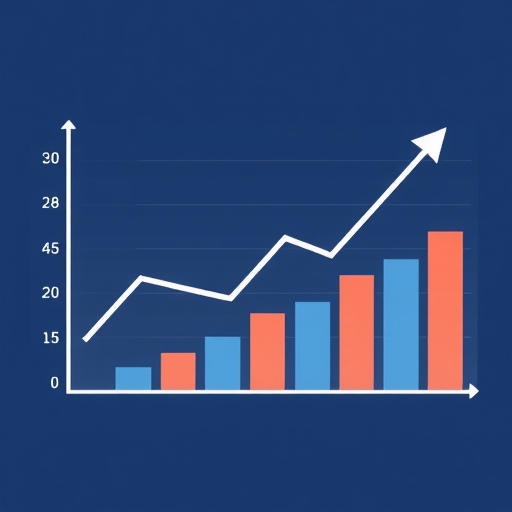
No responses yet